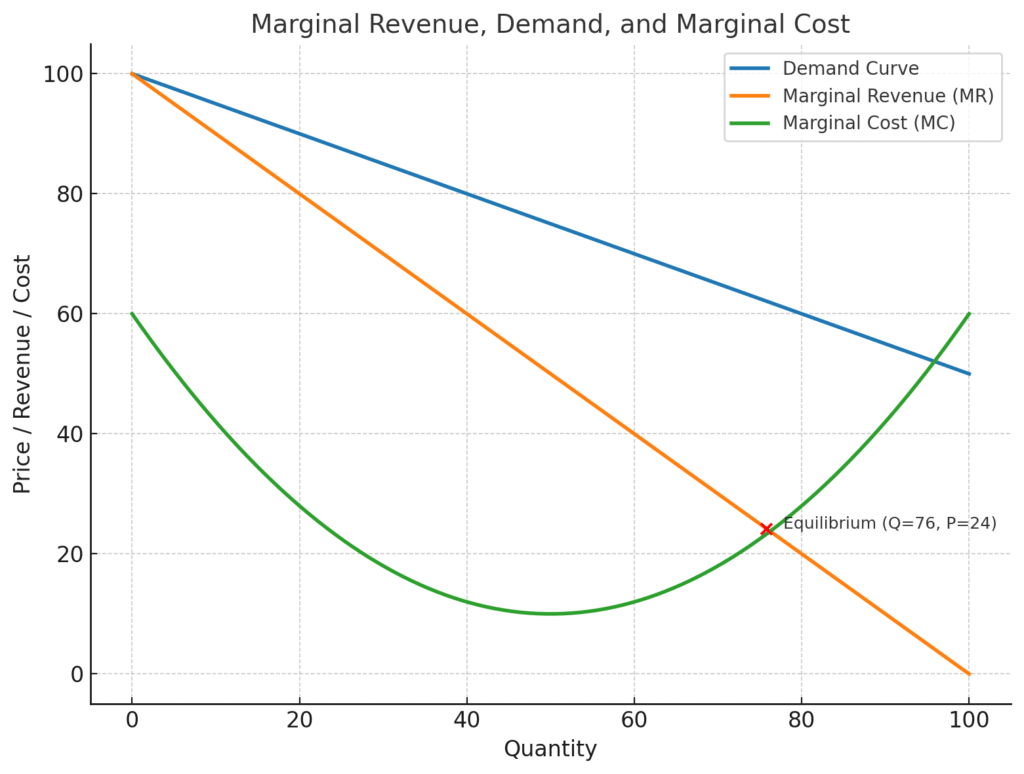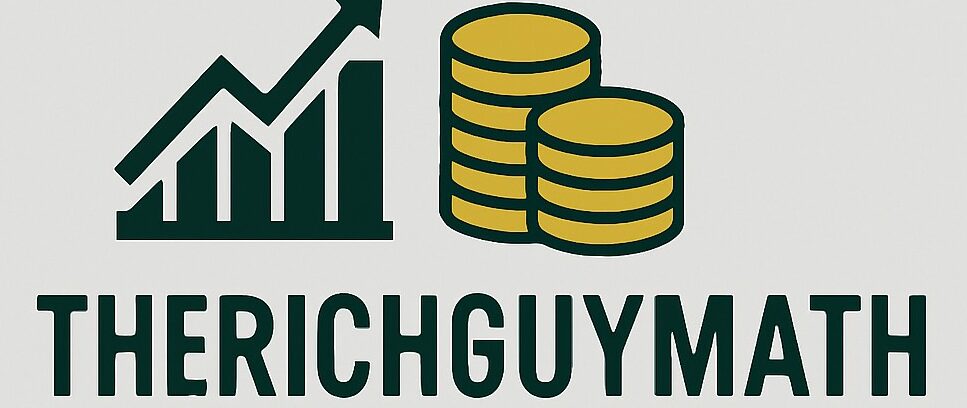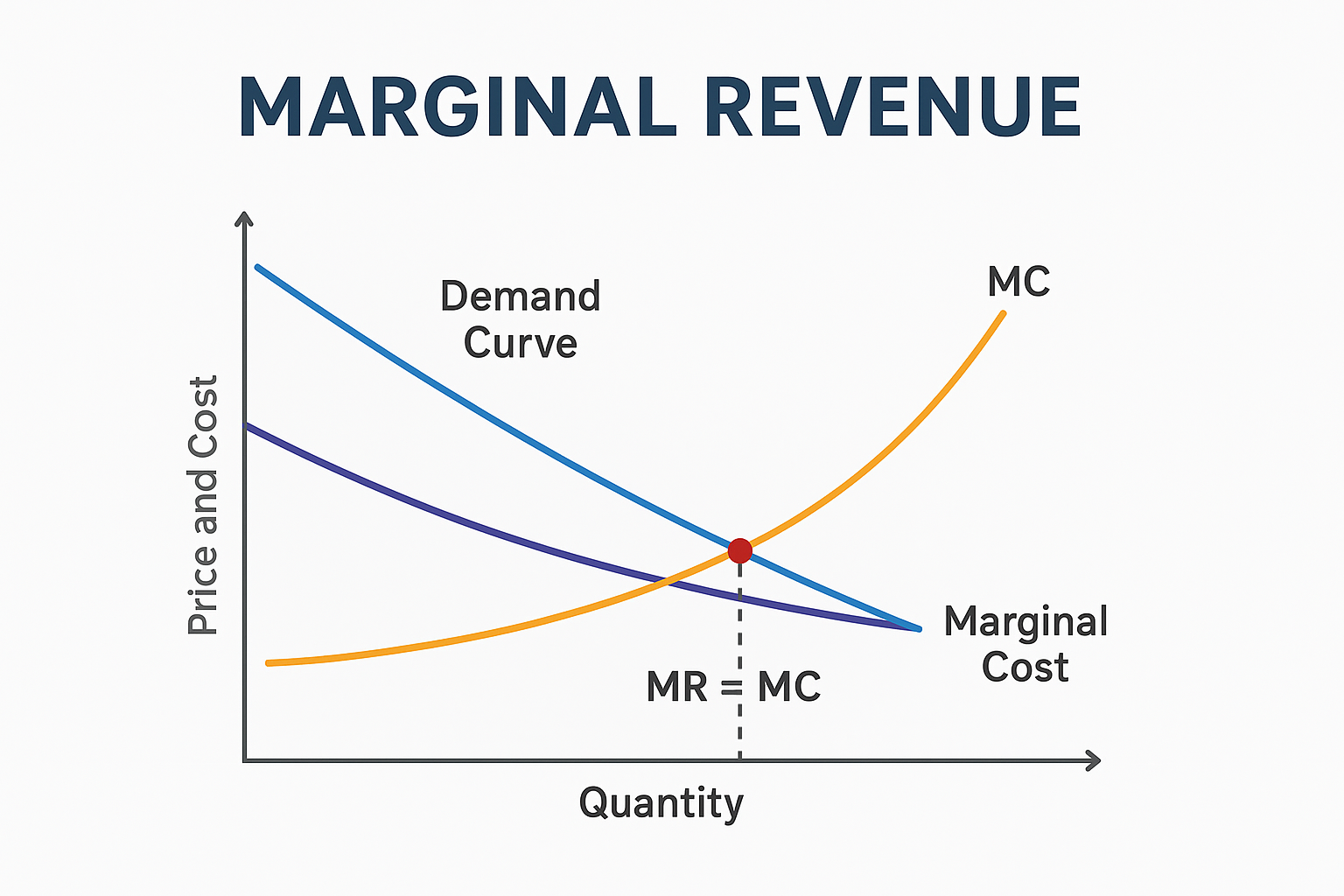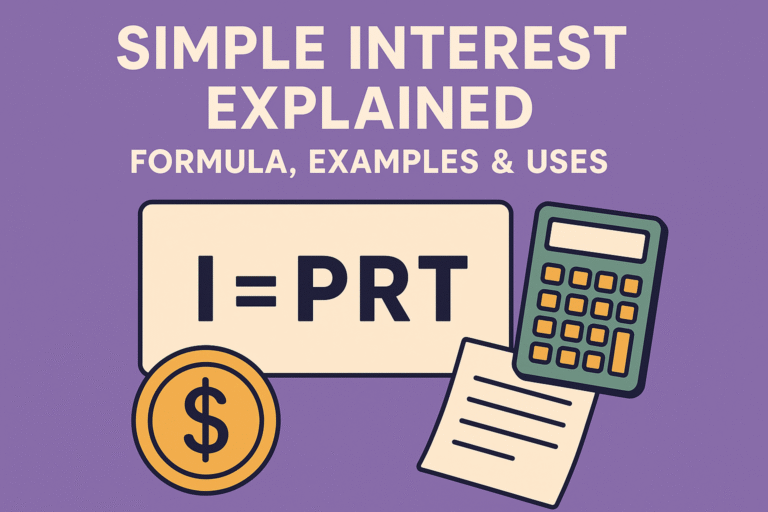When businesses make pricing or production decisions, one key concept they consider is marginal revenue (MR). Understanding MR helps companies optimize sales, maximize profit, and make data-driven strategies.
In this guide, we’ll explain what marginal revenue is, how to calculate it, provide examples, and explore why it’s crucial in economics and business.
What Is Marginal Revenue?
Marginal revenue (MR) is the additional revenue a company earns by selling one more unit of a product or service. It helps businesses understand the relationship between pricing, sales volume, and profit.
In simple terms:
Marginal Revenue = Change in Total Revenue ÷ Change in Quantity Sold
For example, if a company’s total revenue increases from $1,000 to $1,200 when it sells 10 additional units, the marginal revenue is $20 per unit.
Why Marginal Revenue Matters
MR is a core concept in both economics and business strategy. Companies use it to:
- Set prices strategically: Helps find the right balance between volume and price.
- Maximize profit: Guides decisions on how much to produce.
- Understand demand: Shows how customers respond to price changes.
- Evaluate market power: Indicates whether a company is operating in a competitive market or can influence pricing.
The Marginal Revenue Formula
The basic formula is: MR=ΔTR/ΔQ
Where:
- MR = Marginal Revenue
- ΔTR = Change in Total Revenue
- ΔQ = Change in Quantity Sold
Example 1: Simple Calculation
- Total Revenue at 100 units = $5,000
- Total Revenue at 120 units = $5,400
Step 1: Apply the marginal revenue formula
MR = ΔTR ÷ ΔQ
Step 2: Plug in the numbers
MR = (5400 − 5000) ÷ (120 − 100)
Step 3: Simplify
MR = 400 ÷ 20 = 20
Marginal Revenue = $20 per unit.
Marginal Revenue vs. Average Revenue
- Marginal Revenue (MR): Extra revenue from selling one more unit.
- Average Revenue (AR): Total revenue divided by total units sold.
Example: If a company sells 50 units for $1,000 total:
- AR = $1,000 ÷ 50 = $20
- If selling the 51st unit raises revenue by $18, then MR = $18
👉 In perfectly competitive markets, MR = AR = Price. In monopolistic or imperfect markets, MR is usually less than AR.
Marginal Revenue and Demand Curves
Marginal revenue is closely tied to a company’s demand curve:
- Perfect competition: MR is constant and equal to price.
- Monopoly or market power: MR decreases as quantity increases, because firms must lower price to sell more units.
This is why monopolists produce where the marginal revenue (MR) equals the marginal cost (MC) to maximize profit.
Graphing Marginal Revenue
To visualize:
- On a graph, the demand curve slopes downward.
- The marginal revenue curve lies below the demand curve, except in perfect competition.
- The profit-maximizing output occurs where MR = MC.

- Demand curve (downward sloping)
- Marginal revenue curve (steeper, below demand)
- Marginal cost curve (U-shaped)
- Equilibrium at MR = MC
Real-World Examples
1. Streaming Service Pricing
A streaming company charges $10 per subscription. At 100,000 users, revenue is $1,000,000. If lowering the price to $9.50 increases subscriptions to 105,000, total revenue becomes $997,500.
- ΔTR = $997,500 – $1,000,000 = -$2,500
- ΔQ = 105,000 – 100,000 = 5,000
- MR = -$0.50
Here, MR is negative, showing that the price cut hurt revenue.
2. Apple’s iPhone Sales
Apple may find that selling iPhones at a premium price results in higher MR per unit, even if unit sales are lower, compared to cutting prices to drive volume. This is why tech giants use MR to guide pricing.
3. A Coffee Shop
A coffee shop sells 50 cups at $5 each (TR = $250). If lowering the price to $4.80 boosts sales to 60 cups (TR = $288):
- ΔTR = $288 – $250 = $38
- ΔQ = 10
- MR = $3.80
Even though the price per unit dropped, overall revenue increased, making the lower price potentially worthwhile.
Marginal Revenue in Business Strategy
Companies use MR in several key areas:
- Pricing strategy: To decide whether lowering prices increases total revenue.
- Production decisions: To find the profit-maximizing output where MR = MC.
- Market power evaluation: To measure how demand responds to price changes.
- Growth analysis: To ensure new sales add value.
Limitations of Marginal Revenue
- Assumes accurate data: Requires precise revenue tracking.
- Short-term focus: Doesn’t always capture long-term brand value.
- Ignores external factors: Competition, seasonality, and customer loyalty also affect revenue.
- Not always linear: MR changes differently at different price points.
FAQs on Marginal Revenue
Marginal revenue is the income from selling one more unit.
Marginal cost is the expense of producing one more unit.
Profit is maximized when MR = MC.
Yes. If lowering prices reduces total revenue, MR becomes negative. This signals that the company is overproducing or pricing too low.
Use the formula:=(New Total Revenue - Old Total Revenue) / (New Quantity - Old Quantity)
This gives the MR per additional unit sold.
Key Takeaways
- MR measures the extra revenue from selling one more unit.
- Formula: MR = ΔTR ÷ ΔQ.
- In perfect competition, MR = Price. In monopoly: MR < Price.
- Businesses maximize profit where MR = MC.
- MR helps with pricing, production, and growth strategies, but has limits.
MR is a powerful concept that guides business decisions about pricing, output, and profit maximization. While it equals price in perfect competition, it falls below price in monopolistic markets. The golden rule for firms: expand production until MR equals MC, and no further.
Source:
Investopedia
Khan Academy’s Economics Lessons.







